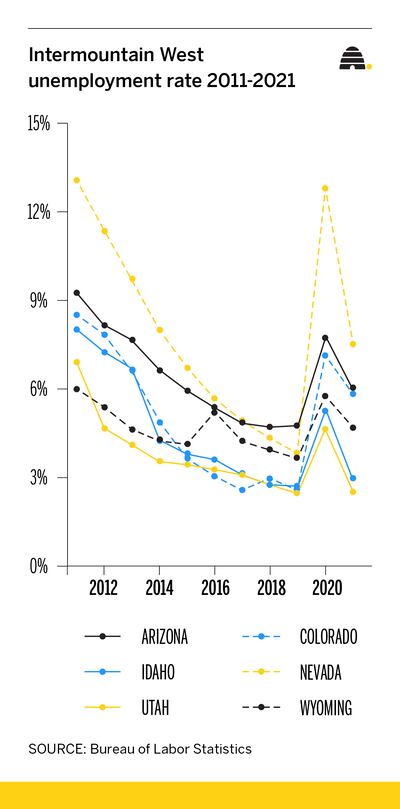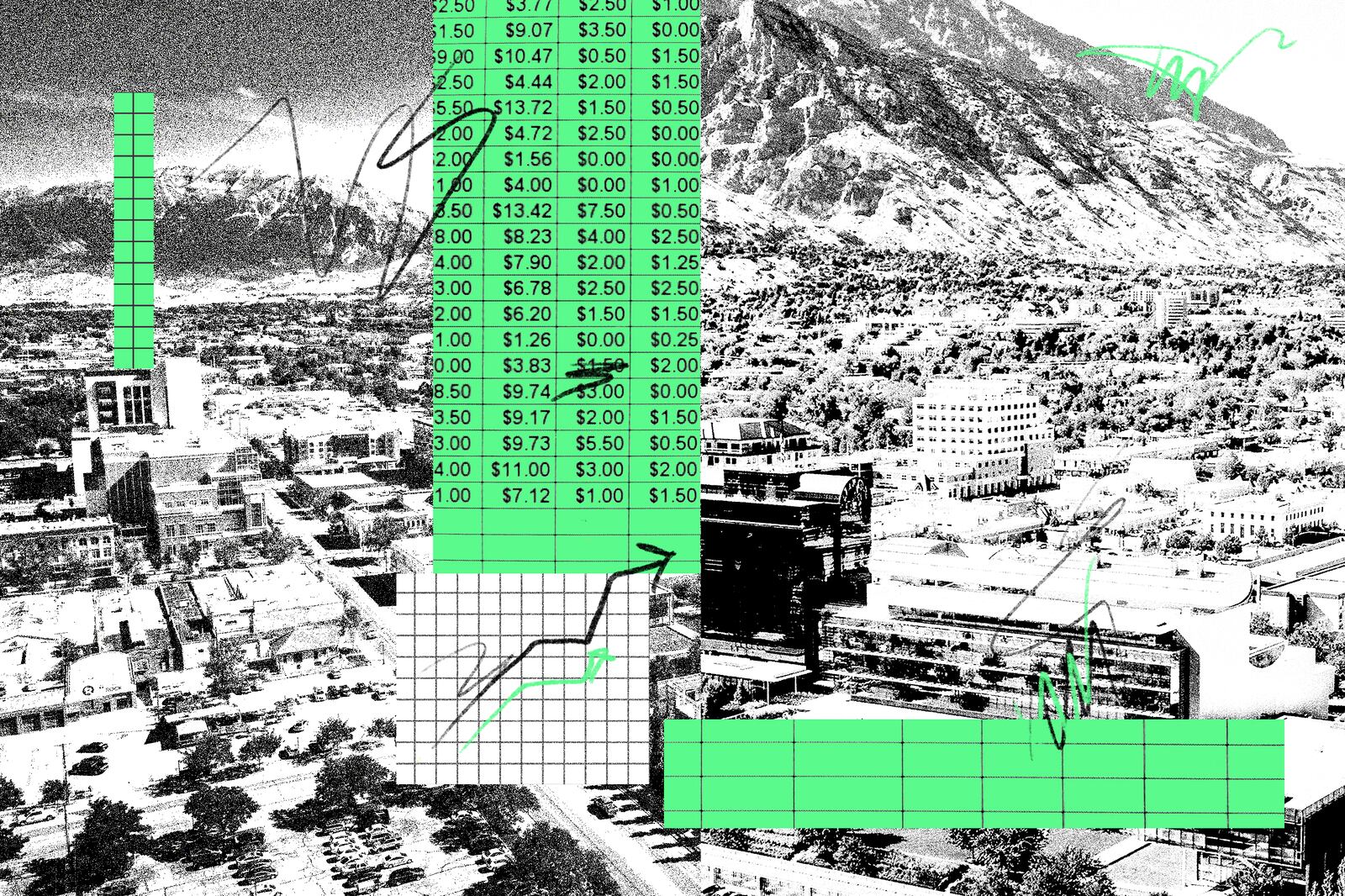The Intermountain West’s labor market was a story of extremes in 2021.
Utah ended the year with the second-lowest unemployment rate in the country at 1.9% in December, a Bureau of Labor Statistics press release last week said, followed closely by Idaho’s 2.4%. In the same month, Nevada had the second-highest jobless rate at 6.4%.
And for the year, the average unemployment rate in Utah and Idaho was under 3%, close to pre-pandemic levels, while Nevada’s average unemployment rate in 2021 was 7.7% followed by Arizona with 6%.
Still, as the pandemic raged on and headlines declared a “Great Resignation” of the workforce was confounding employers trying to bounce back from an economic lockdown the year before, 2021 was better than 2020 from a jobs perspective in the Intermountain West, according to a Deseret News analysis of the latest labor statistics.
The average unemployment rate for Arizona, Colorado, Idaho, Nevada, Utah and Wyoming combined last year was about 5%, down from 2020’s average unemployment rate of 7.4% in the region, but still above the 3.4% in 2019.

News reports last year described the “Great Resignation” as an unexpected phenomenon of workers quitting or not returning to their pre-pandemic jobs. But only about 161,000 more people quit their jobs last year than in 2019 in the Intermountain West, according to bureau statistics, and the number of people quitting their jobs was fairly stable over the past decade.
The major exception was last year, when three-quarters of a million more people quit their jobs than in 2020 — a jump that exacerbates the other problems like labor shortages.
In 2020, more people were fired from their jobs than quit their jobs for the first time in a decade, a side effect of the pandemic and especially in lower-wage jobs, labor officials said.
Over 3 million people in the Intermountain West were laid off in 2020.
But last year, about three quarters of a million more people quit their jobs than in 2020 in the Intermountain West. Arizona had the highest number of people quitting jobs last year at just over 1 million and Wyoming had the fewest at 101,000.
The 4.5 million total quits across the country in November alone is the highest per month the bureau has ever seen.
“In November 2021, quits increased in several industries, with the largest increases in accommodation and food services; health care and social assistance; and transportation, warehousing, and utilities,” a bureau press release from earlier this month said.
For the Intermountain West, which saw some job market stability between the recession a decade ago and the pandemic lockdown, the economic instability is affecting workers on a personal level.
Those affected by both recessions are still struggling, where long-term unemployment not only affects people’s chances of getting a new job, but their emotional and physical health as well, as the Deseret News reported in late 2020.
Yet, Julie Percival, supervisory economist and branch chief for the bureau’s Southwest and Mountain Plains Information Office, said labor force participation is staying steady and also returning to pre-pandemic levels in Utah, Colorado and Wyoming.
The quick bounce back is something economists are still analyzing.
One possible factor is a chunk of the people “quitting” their jobs were actually retiring, Percival said. “Most of our job loss came from retirement age.”
The onslaught of retirements could be due to the work-from-home situation, an employer’s pandemic policies or people are facing their own mortality, but there’s no way to know for sure, she said.
“One of the things about the market that we know right now is that when a lot of people retire, what happens is everybody moves up and they are sucked out of the low-wage jobs,” Percival said.
Over the past decade, average hourly wages have increased about 4% every year in the Intermountain West. But since 2020, that’s dropped slightly. It’s another statistic that labor economists are sorting out.
“Early in the pandemic we saw a lot of jobs lost that were lower wage,” Bureau of Labor Statistics national spokesperson Gary Steinberg said. “A thought is, are those lower wage jobs coming back or are there more jobs in higher paying industries?”
In 2021 in the Intermountain West, Colorado paid its workers the highest wage at $31.95 per hour and Idaho paid the lowest wage at $26.48 per hour.
Here’s a look back at the 2021 labor market in six Intermountain states:
House parties blocked by Airbnb
| State | Avg. Unemployment % | Workers laid off | Workers quitting | Avg. hourly wage |
|---|---|---|---|---|
| Arizona | 6.08 | 277,000 | 1,011,000 | $28.39 |
| Colorado | 5.93 | 407,000 | 962,000 | $31.95 |
| Idaho | 2.98 | 95,000 | 284,000 | $26.48 |
| Nevada | 7.67 | 227,000 | 566,000 | $26.50 |
| Utah | 2.58 | 162,000 | 509,000 | $29.54 |
| Wyoming | 4.80 | 45,000 | 101,000 | $27.49 |
Correction: An earlier version incorrectly stated that 2 million more people quit their jobs last year than in 2020. Three-quarters of a million more people quit their jobs last year than in 2020. It also incorrectly stated that over 30 million people were laid off in the Intermountain West in 2020. Over 3 million people were laid off in the region that year. In addition, an earlier table of 2021 employment data was miscalculated concerning the number of workers laid off and the number of workers quitting.
K. Sophie Will is a Deseret News contributor. @ksophiewill

